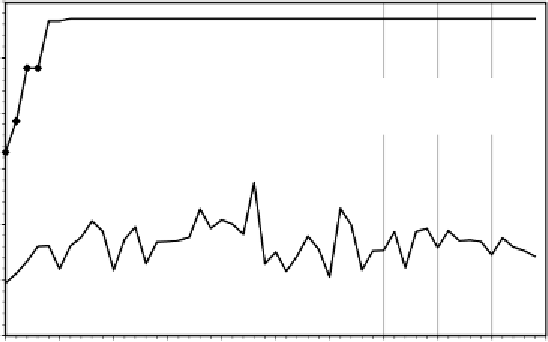Information Technology Reference
In-Depth Information
range of a parameter will fall below or above the imposed constraints; when
this happens, the individual is made unviable and, therefore, will not be cho-
sen to reproduce with modification, putting pressure on the selection of indi-
viduals that satisfy the chosen constraints and contributing to their dissemi-
nation in the population.
Let's now see how the GEP-PO algorithm fine-tunes its solutions by solv-
ing a simple optimization problem.
8.2.2 Optimization of a Simple Function
The function we are going to optimize with the GEP-PO algorithm is the
same simple function of section 8.1.2, subjected to the same constraints. For
the sake of simplicity, we are also going to use a small set of five random
constants per gene and, again, represent them by the numerals 0-4, thus giv-
ing R = {0, 1, 2, 3, 4}. The ephemeral random constants “?” will be drawn
from the rational interval [-2, 2], as, in this case, the constraints are imposed
internally after the expression of each parameter value. The complete list of
the parameters used per run is shown in Table 8.2.
The evolutionary dynamics of the successful run we are going to analyze
is shown in Figure 8.3. And as you can see, in this run, a perfect solution
3.0
2.5
Best Ind
Avg Output
2.0
1.5
1.0
0.5
0.0
0
5
10
15
20
25
30
35
40
45
50
Generations
Figure 8.3.
Progression of average output of the population and the output of the
best individual for a successful run of the experiment summarized in Table 8.2.

































